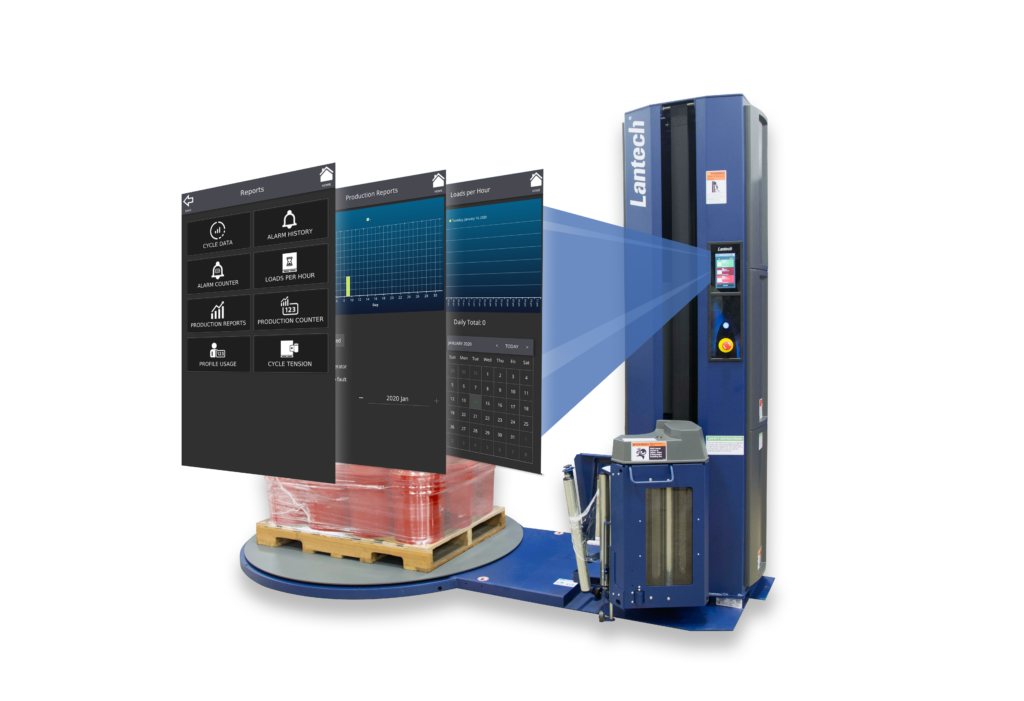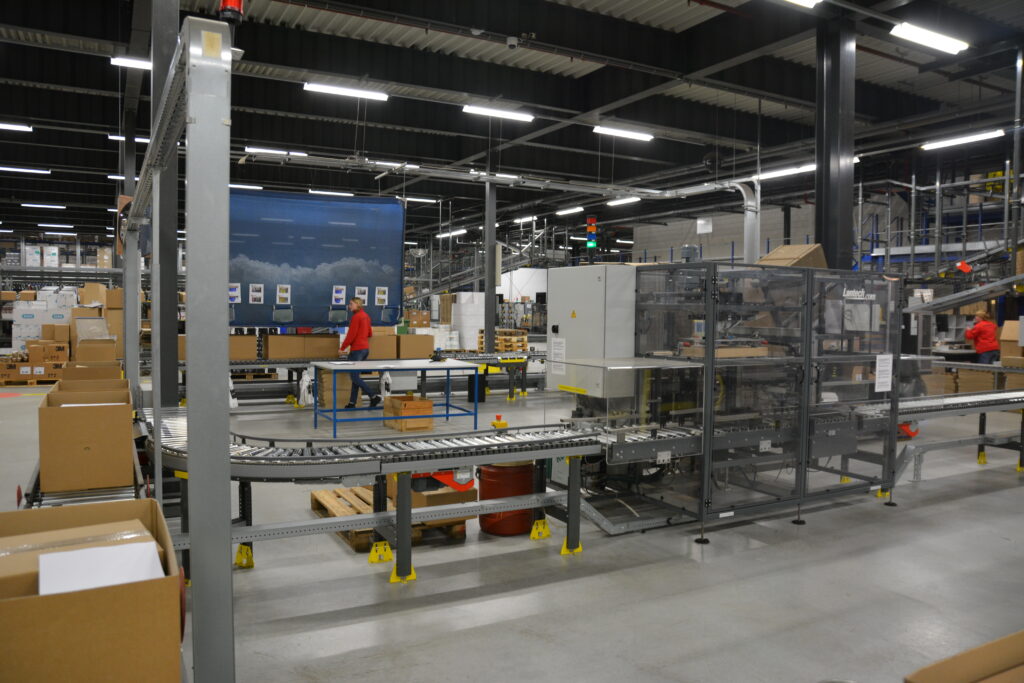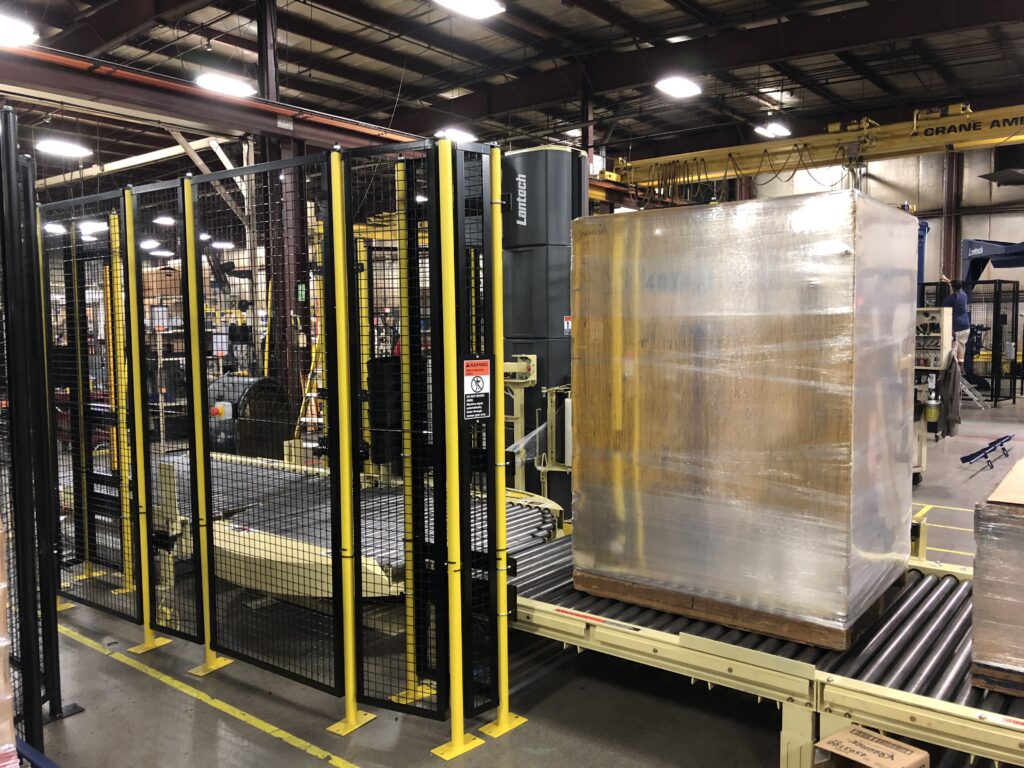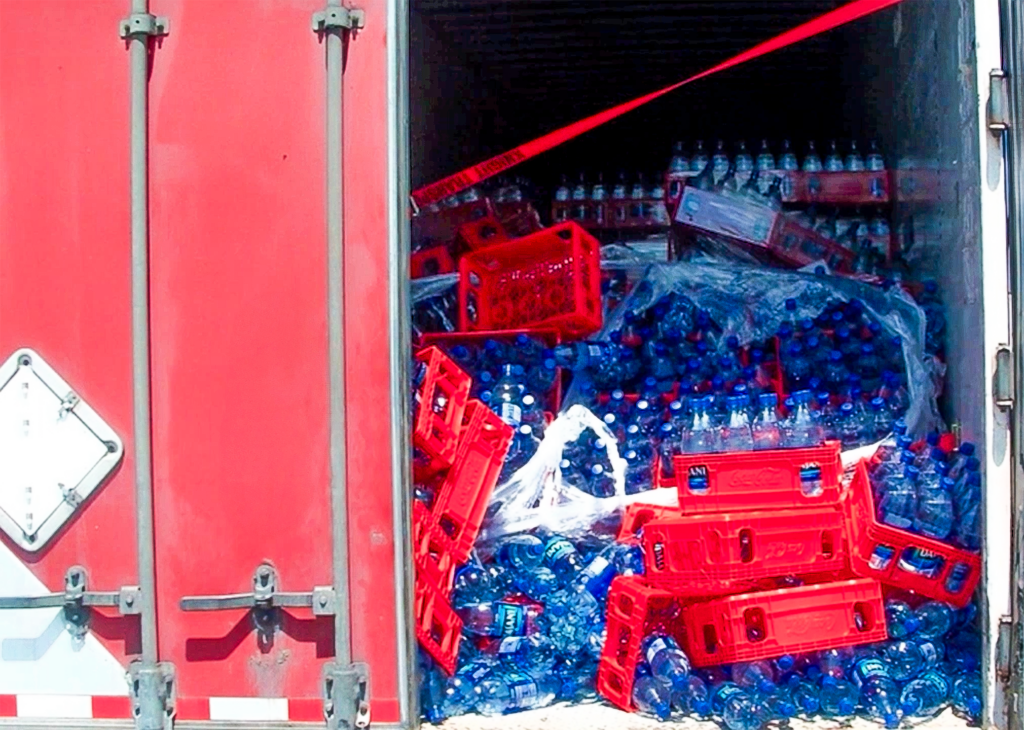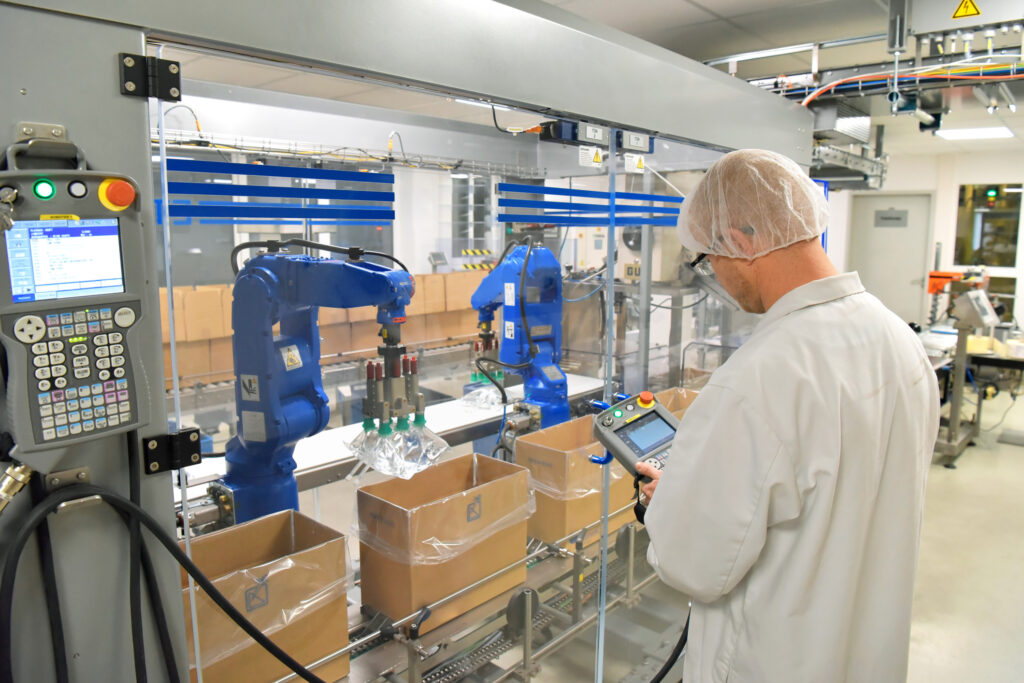Every day loads slide off their pallets during shipment, causing billions of dollars of damage and waste each year. If your load is not locked to its pallet it’s at risk.
Different stretch wrappers have different load locking methods. At the end of a stretch wrapping cycle some wrappers bunch the film into an accordion-like rope, others will roll the film into a cable and others just wrap to the bottom of the pallet. Our research shows rolling the film is most effective.
During the stress of shipment regular roping tends to unbunch, reducing its effectiveness. However, rolling the bottom 3 to 5 inches of the film web into a tight cable then driving it down onto the pallet – about an inch below its deck boards – locks the load to the pallet preventing it from sliding off.
The position of the cable is also important. It needs to be high enough to keep from being punctured by the forks of a forklift or pallet jack and low enough to lock the load to the pallet.
There’s more than enough risk to go around in today’s world. Why take chances with your loads when there’s an easy, inexpensive and effective way to improve their chances of arriving safely to their destinations?
To learn more about locking your load to the pallet and see how machines roll film into a cable watch this video.
If you’re looking for other ways to improve your stretch wrapping processes check out our eBook on the benefits of wrapping and weighing at the same time.
This post was published on October 23, 2015 and updated on September 13, 2017.
October 23, 2015


